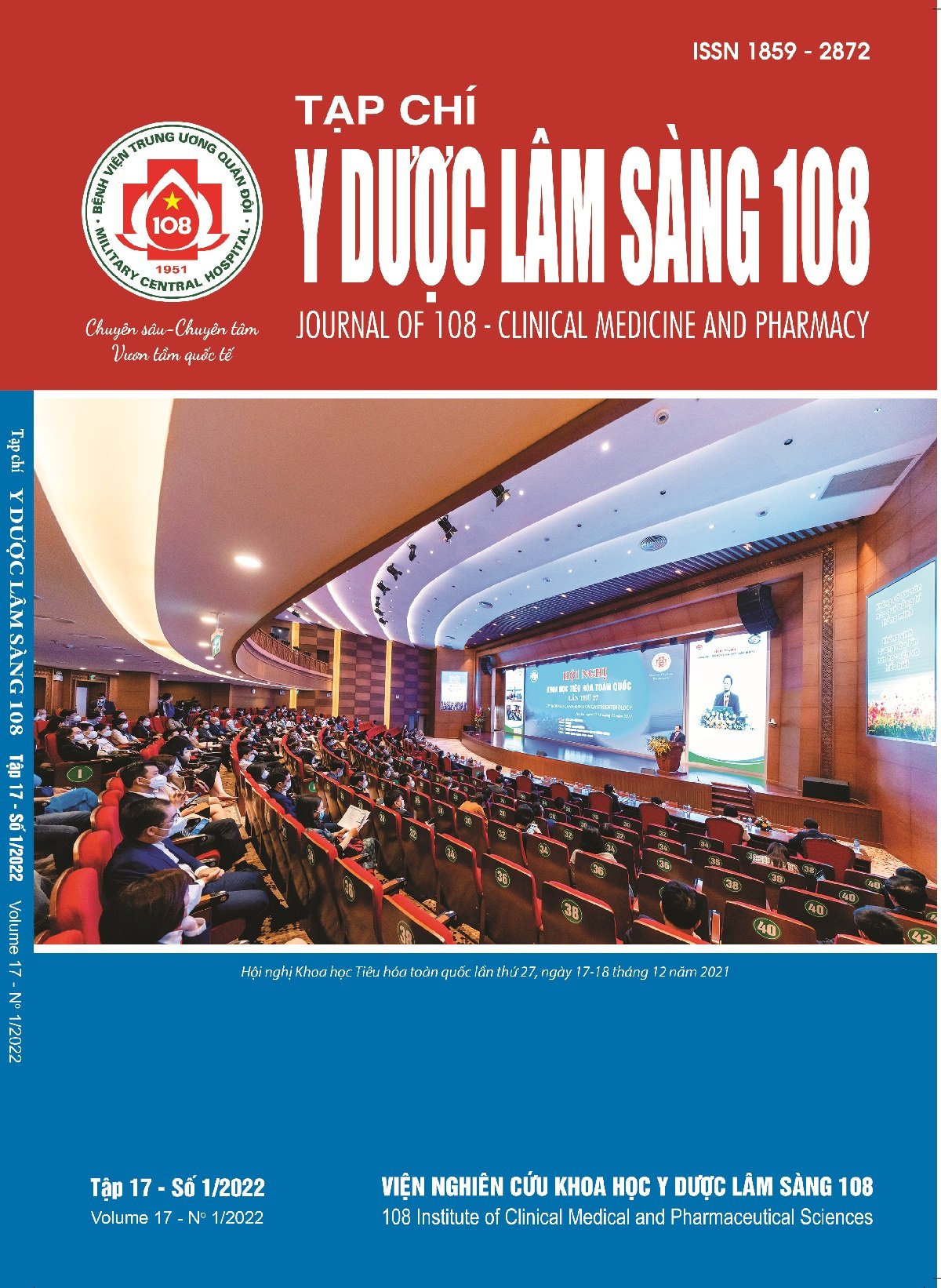Evaluation of the efficacy of non-invasive pressure support ventilation (BiPAP) in patients with acute respiratory failure due to acute decompensated heart failure at 108 Military Central Hospital
Main Article Content
Keywords
Abstract
Objective: To assess the efficacy of non-invasive pressure support ventilation (NPPV) in patients with acute respiratory failure due to acute decompensated heart failure (ADHF). Subject and method: A descriptive study on 39 ADHF patients suffering from ARF which is refractory to standard medical care at the Cardiovascular Intensive Care Unit, 108 Military Central Hospital from June to November in the year 2020. Result: In these patients, the rate of intubation was 7.7% (3 of 39 patients), the mean duration of non-invasive ventilation was 153.46 ± 47.16 minutes and the length of hospital stay was 10.51 ± 6.03 days. Clinical parameters and arterial blood gas improve statistically in first hour. In-hospital death occurred in 3 patients, account for 7.7%, the adverse complications included skin injury (23.1%), aspiration (12.8%), pneumonia (7.7%) and hypotension (7.7%). There was a moderate negative correlation between pH and NPPV duration (r = -0.392, p<0.05) and moderately positive correlation (r = 0.459, p<0.01) between arterial level of CO2 and NPPV duration (r = 0.459, p<0.01). Conclusion: NPPV is a safe and effective therapy which should be widely used for ADHF patients. The duration of NPPV correlates to arterial level of pH and CO2.
Article Details
References
2. Belenguer-Muncharaz A, Mateu-Campos L, González-Luís R et al (2017) Non-Invasive mechanical ventilation versus continuous positiveairway pressure relating to cardiogenic pulmonary edema in an intensive care unit. Arch Bronconeumol 53(10): 561-567.
3. Pagano A, Numis FG, Rosato V et al (2018) Pressure support ventilation vs Continuous positive airway pressure for treating of acute cardiogenic pulmonary edema: A pilot study. Respir Physiol Neurobiol 255: 7-10.
4. Antonelli M, Pennisi MA, Montini L (2005) Noninvasive ventilation in the clinical setting-experience from the past 10 years. Critical Care 9: 98-103.
5. Berbenetz N, Wang Y, Brown J, Godfrey C (2019) Non-invasive positive pressure ventilation (CPAP or bilevel NPPV) for cardiogenic pulmonary oedema. Cochrane database of systematic reviews 4: CD00 5351.
6. Carratala JM (2010) Noninvasive ventilation in acute heart failure: Use of continuous positive airway pressure in the emergency department. Emergencias 22(1): 49-55.
7. Masip J, Peacock WF, Price S et al (2018) Indications and practical approach to non-invasive ventilation in acute heart failure. Eur Heart J 39(1): 17-25.
8. Bello G, De Santis P, Antonelli M (2018) Non-invasive ventilation in cardiogenic pulmonary edema. Ann Transl Med 6(18): 355.
9. Maraffi T (2018) Non‑invasive ventilation in acute cardiogenic pulmonary edema: How to do it, Internal and Emergenc Medicine 13: 107-111.
 ISSN: 1859 - 2872
ISSN: 1859 - 2872
